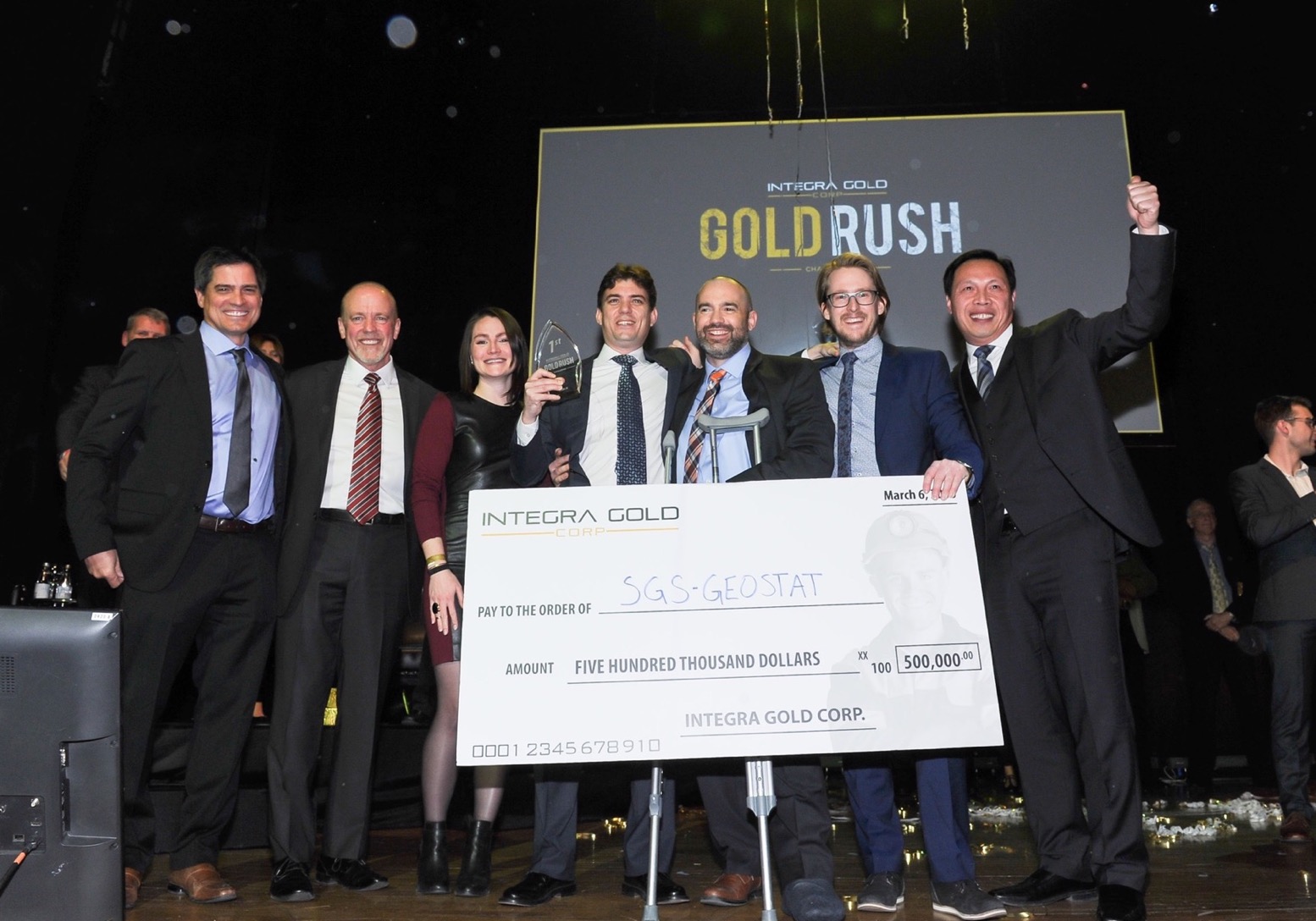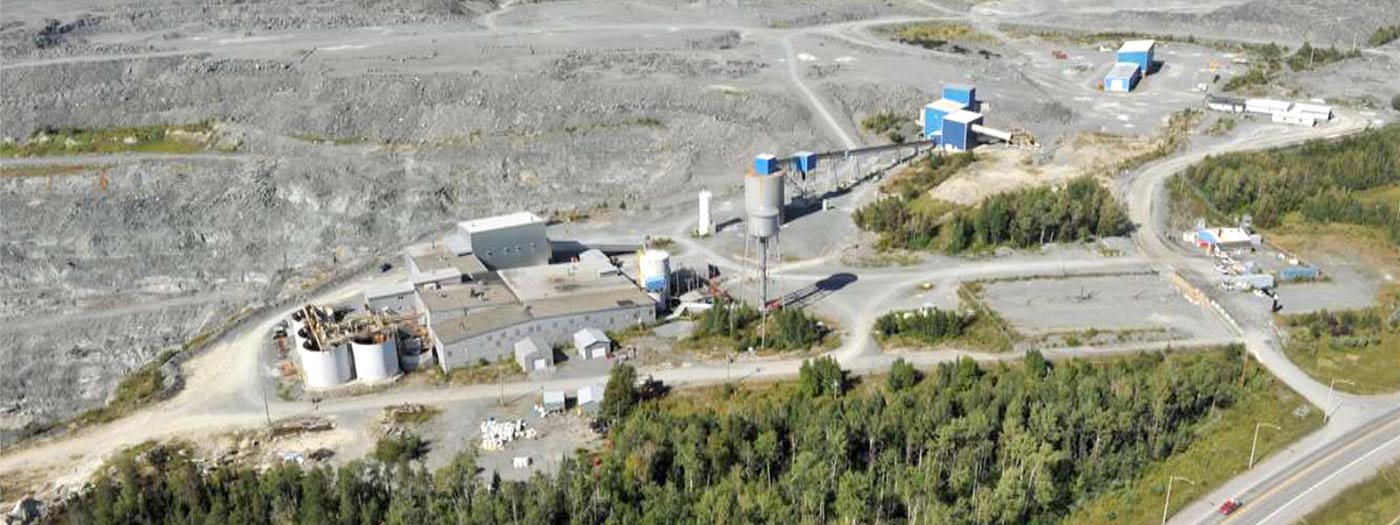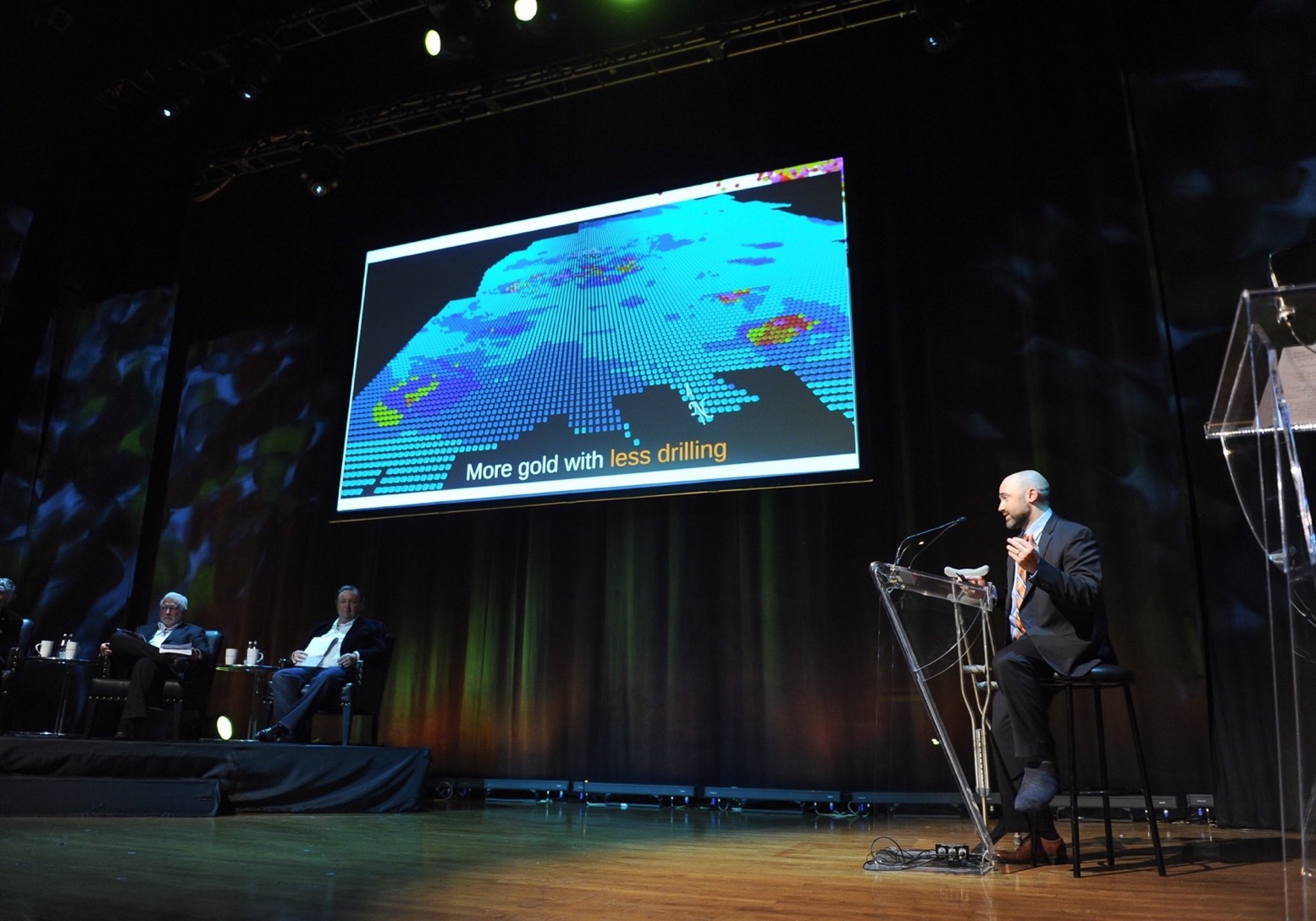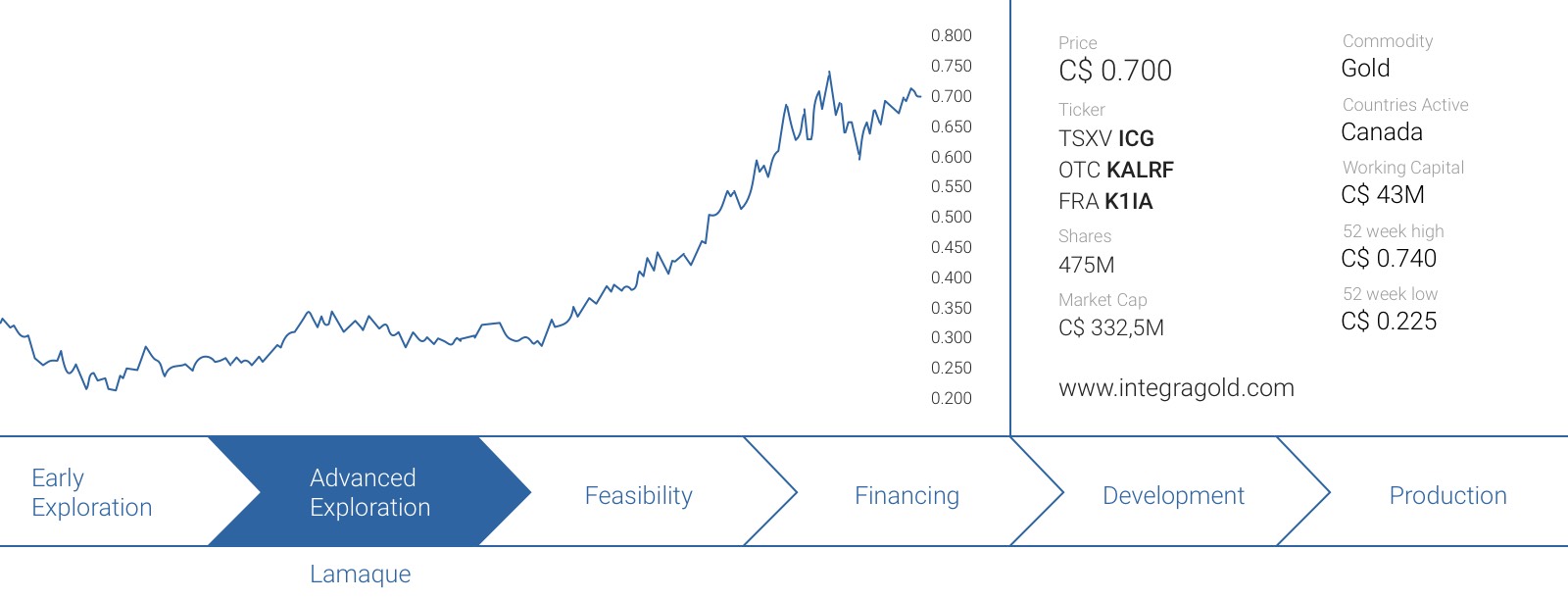Approximately three months ago, Integra Gold (ICG.V) announced the winner of the Gold Rush Challenge at the PDAC conference in Toronto, the only ‘must-attend’ event in the mining sector. As you probably remember, Integra made 6 terabyte of (exploration) data freely available and launched a challenge to see who would come up with the best exploration ideas and discover the next major gold deposit in Val-d’Or, Québec.
A team from SGS Géostat won the competition and returned home with a C$500,000 cheque. Now the dust has been settled, we wanted to follow up on how both the company and the winning team were/are looking back at the Gold Rush.
We asked Guy Desharnais from SGS Géostat some questions to get a better understanding of the winning submission.

Interview
Why did the SGS Geostat team sign up for the Goldrush challenge? What did you want to achieve?
We were interested from a purely scientific and competitive point of view. Several people from our office proposed that we should enter, it was just a matter of how we could structure it within SGS.
Was SGS supporting your endeavours, or did you do everything after-hours?
SGS was very supportive of this initiative, our manager was confident in our ability to become finalists and the prize money would have covered some of our expenses. However we did put in some evenings and weekends to get it done at crunch time.
Can you explain the scoring system you used to rank the targets?
Several types of potential exploration targets were recognized within the Sigma-Lamaque property; these targets have varying amounts of available data and thus required different strategies.
Given the total amount of available information and its clustered nature around known deposits, we created a framework that de-clustered and integrated all the data into an unbiased, adaptable and “updatable” block model. In parallel to best practice geological and geostatistical analysis, the data was processed with an advanced machine learning algorithm to assist in identifying novel targets.
The geological data and interpretations were compiled in a single model with each block containing all the available data from each of the mineralization vectors. Each of the vectors were weighted based on our understanding of their relative importance, and combined to generate an overall prospectivity score between “0” and “100”.
In parallel to best practice geological and geostatistical analysis, the data was processed with an advanced machine learning algorithm (Bayesian Gaussian Process Latent Variable Modelling) to assist in identifying novel targets.
High value clusters of blocks were identified and constrained to allow evaluation of their intrinsic economic potential; taking into account their position relative to surface or existing infrastructure. Drill holes were planned to intersect the geology at optimal angles and their position and risk was evaluated within Virtual Reality using Oculus Rift Technology and Genesis software.

Why is this technology disruptive? When one puts the Oculus Rift headset on, the drill holes and intervals are visible but how is this different from an ‘old-school’ 3D model? Why is visualization a big help?
The advantage of visualization within virtual reality comes down to immersion, and this is particularly useful for people that are not used to “thinking in 3D”. Stakeholders such as potential investors and community leaders would greatly benefit from this technology to easily wrap their head around the scale and trends within a given deposit or geological model.
What kind of future do you think virtual reality has in the mining sector?
I think that we are on the cusp of seeing several applications for VR and Augmented Reality (AR). Exploration and Mining is multi-dimensional like almost no other industry can be and the comprehension of the trends in space and time will be powerful tools to reduce risk and increase productivity going forward. I do not think it will be too long before we see mining equipment operated (very) remotely by an driver in VR that, not only has the camera view from his equipment, but has ore “painted” red based on the location of high grade blocks from the most recent reserve estimation.
We also talked to George Salamis, the executive chairman of Integra Gold to hear more about the company’s perspective and perception of the Gold Rush Challenge.
The dust of the Integra Goldrush Challenge has now settled, and even though all five finalists had excellent ideas, only one could win, SGS Geostat from Québec. Why do you think the jury liked this idea the most?
I think the jury was impressed by the fact they were seeing, for the first time in a public forum, the collision of traditional geoscience thinking with machine learning. Artificial intelligence and virtual reality viewing techniques came together to prove up some exciting exploration targets that would have been too hard for even the smartest human brain and most seasoned geologist to process on their own.
SGS brought a combination of real-world “boots-on-the-ground” expertise in these types of deposits together with exponential technologies such as machine learning and AI to produce some phenomenal results.
How many teams participated in the Goldrush, and how did you narrow the total playing field down to just five finalists? It must have been a pretty tough job as we can’t imagine the ideas that were ranked 6-25 were bad either.
We had 1342 participants from 83 countries, forming 95 teams – which was far more than we expected. The Top 20 finalists were narrowed down by WSP I Parsons Brinckerhoff, one of the World’s leading engineering firms, , and then further whittled down to a Top 5 list by our esteemed panel of judges.
We had some great names in the business looking after this (pre-selection) for us: Neil Adshead: Investment Strategist at Sprott Asset Management LP, Andrew Brown: Chief Geologist- West Africa for B2Gold Corp, Benoît Dubé: Senior Research Scientist with the Geological Survey of Canada, James Franklin: Geological Survey of Canada Chief Scientist (retired), David Rhys: Panterra Geoservices consulting geologist and Brian Skanderberg: President and CEO of Claude Resources. The Top 20 list is, in fact, stellar in our view and presented some excellent ideas which we are now compiling together with the Top 5 of course.

Does Integra now own all the intellectual property of all submissions? And have some parts of the 6 terabyte of data still not been touched?
We do indeed own the IP to these ideas as they apply to Lamaque, yes. And we do indeed hope that others will take some of these excellent ideas and use them elsewhere, as we will use them at Lamaque. Somebody else’s success whether next door to us or a continent away, will ultimately be our success too, in so many different ways.
Open sourcing data and idea sharing is a trend which has taken hold in so many other businesses – it’s about time it happened in the exploration sector too.
The winning idea was based on virtual reality helping to rank potential exploration targets. How important will VR become in the mining sector?
Virtual Reality and Augmented Reality are exponential technologies, similar to machine learning and artificial intelligence that simply allow us humans to visualize “big data” in a manner that would have previously been impossible for us to process with brain power and imagination alone.
SGS used the Oculus Rift VR system to allow the judges to visualize the results of their Gold Rush submission, which was a huge benefit to them. Again, we hope this is a new trend that was established that night at the Gold Rush Challenge. It’s used in practically every other business that is driven by “big data” and large databases – why not mining exploration too?
The ultimate goal of the Goldrush challenge was to determine interesting new exploration targets at the Sigma-Lamaque project in Québec. Even though you have no shortage of exploration and drill targets (as you are planning to complete another 100,000 meter of drilling this year and have a backlog of approximately 75,000 meters of drill results), did you and the exploration team design a drill program to specifically follow up on some of the ideas from the Gold Rush challenge?
We currently are in the process of compiling all of the Top 20 ideas on one map and in one 3D data visualization system, in an effort to begin ranking the targets. Some favorites are emerging for sure, and we prioritize our exploration efforts based on that ranking.
Can you explain the importance of the No. 4 Plug in the greater scheme of things?
The gold mineralization encountered at the No. 4 Plug and recently reported in a press release last month, is hosted in a combination of steeper and higher-angle high grade veins (think analogue to the high grade/high angle C structures at Triangle) and in variable angle vein stock works and vein sets.
The thicknesses of mineralization that we are encountering at No. 4 Plug, subject to further drilling and verification, might be potentially amenable to lower-cost bulk mining techniques. For example, Agnico-Eagle Mines (AEM.TO; NYSE:AEM) is currently successfully mining similar styles of gold mineralization at their Goldex Mine located less than 10 km to the west of Lamaque.
The Goldex mine originally started up in 2008 as an underground mine exploiting the GEZ zone using high-volume, bulk-tonnage methods with large mining stopes. They’ve successfully managed to bulk mine at a cost of C$41/tonne, which is a vastly cheaper than selective high grade vein mining. Also, given the proximity of Plug 4 to Triangle, there is potential to share mining access and infrastructure. So, these are all things that we will be looking at in future drilling and in future studies option studies.

Our updated opinion about Lamaque
Right after the previous resource estimate at Lamaque was released, we made an attempt to calculate the potential value of the project based on the increased resource estimate rather than the small estimate that was used for the previous PEA. According to our calculations, we were expecting the updated economics to show an after-tax NPV of in excess of C$300M, but as the Lamaque project continues to grow (with the additional mineralization at the No. 4 Plug zone as well as at depth with the C7 structure), Integra decided to postpone the updated PEA which was originally expected to be released this month.
Integra obviously wants to include as much data as possible to give the market an up to date overview of the project, so it’s in the company’s best interest to wait a bit and incorporate the tens of thousands of meters of drilling that haven’t been released just yet. These drill results will very likely have an impact on the mine plan, so we do prefer the company to wait with its PEA rather than releasing an updated study that would already be outdated again a few weeks later.
The path to become a 200,000+ ounces producer
The No. 4 Plug also adds more optionality to the Lamaque project. As the resource at the Triangle zone was relatively limited, Integra decided to use a base case production scenario of 1,500 tonnes per day as that made the most sense at the time.
However, as the resources at Lamaque continued to grow, the 1,500 tpd scenario is very likely already outdated. It now looks like the Triangle zone by itself could (and should) be able to produce 1,500 tonnes per day, but we’re also increasingly confident Integra could maximize its efficiency by also simultaneously mining the No. 4 Plug and the Parallel Deposit. Integra’s existing mill has a total capacity of 2,200 tonnes per day so it should be pretty easy for the company to implement a 2,200 tonnes per day mining and milling scenario.
This also leads to the next issue we were wondering about. Considering the high production rate at Triangle and the fact the mineralization has now been confirmed at a total depth of in excess of 1,100 meters, it could make more sense to start thinking about a shaft at Triangle rather than a ramp.
Conclusion
Integra’s Gold Rush Challenge was a huge success, and the company is now following up on dozens of exploration targets to decide which ones it will drill first. There’s no shortage of ideas at Lamaque, and the project just keeps on giving with the recent discovery of the C7 structure.
The updated PEA will take a bit longer than we expected but we are confident the after-tax NPV5% will at least triple, and probably even quadruple compared to the current PEA. You could easily throw the existing PEA in the garbage can as it’s definitely not representing the real value of Lamaque. The ‘old-timers’ have left a lot of gold behind, and Integra Gold is putting all pieces of the resource puzzle together.
The author holds a long position in Integra Gold. Integra Gold is a sponsor of the website. Please read the disclaimer

